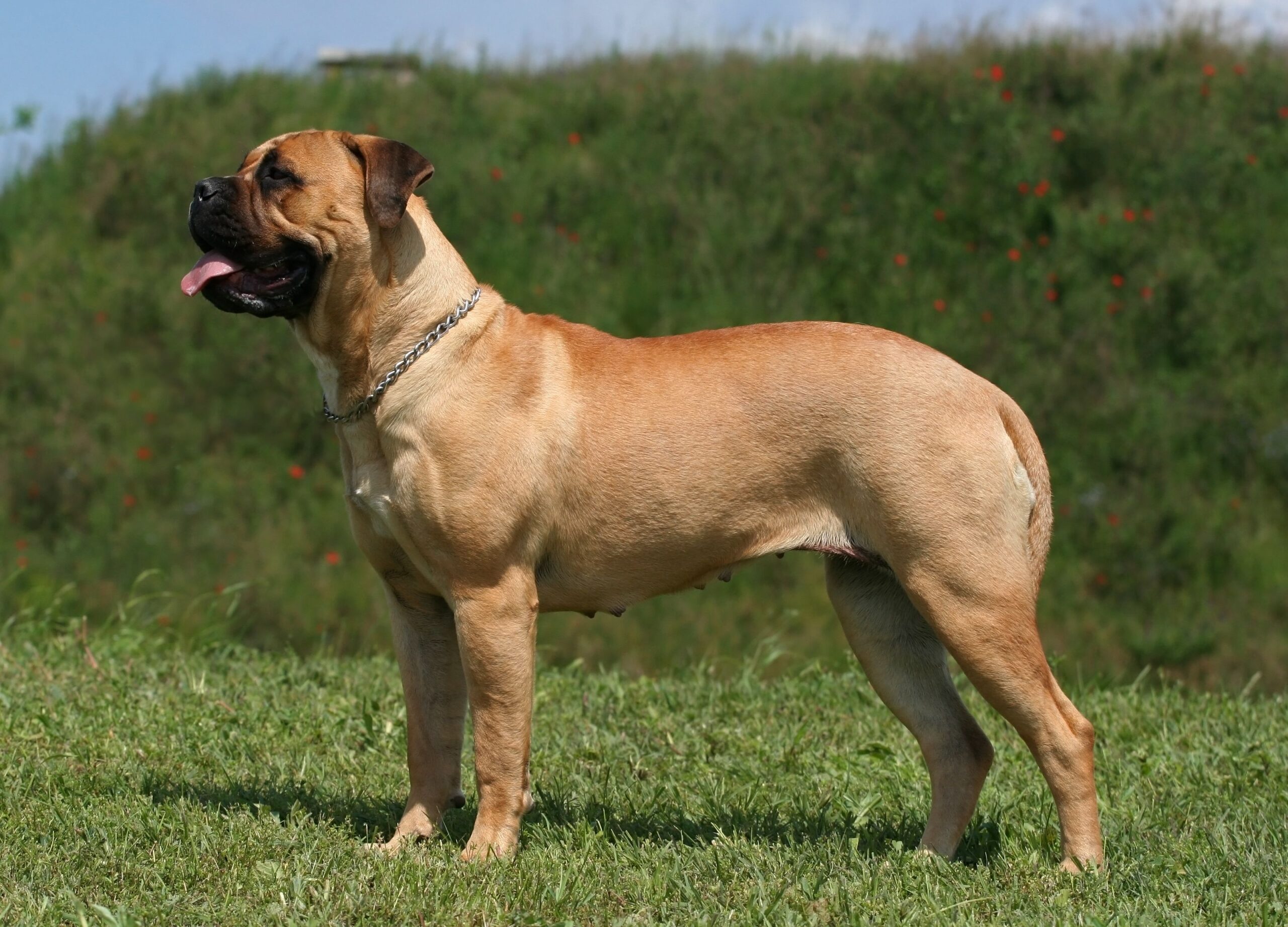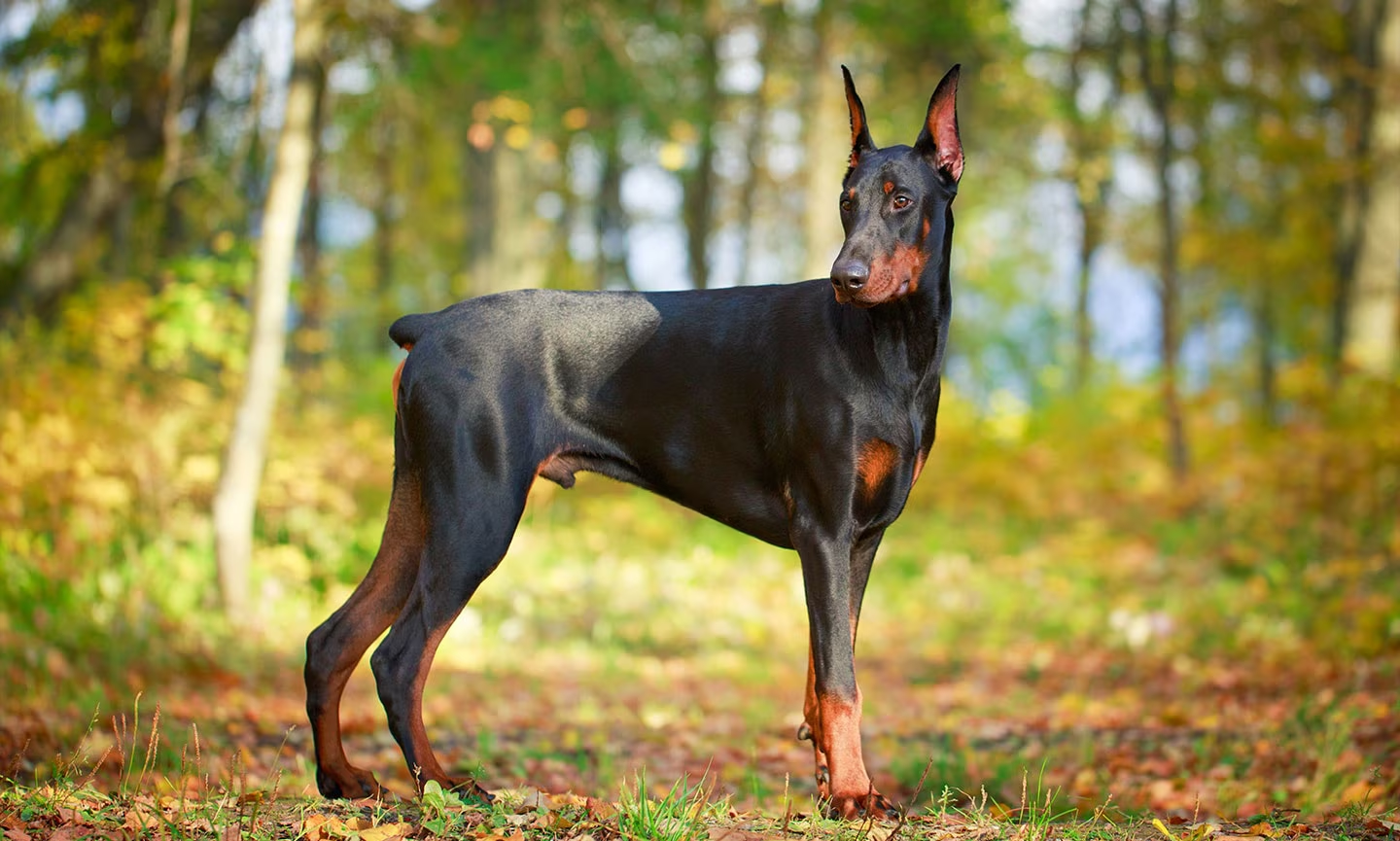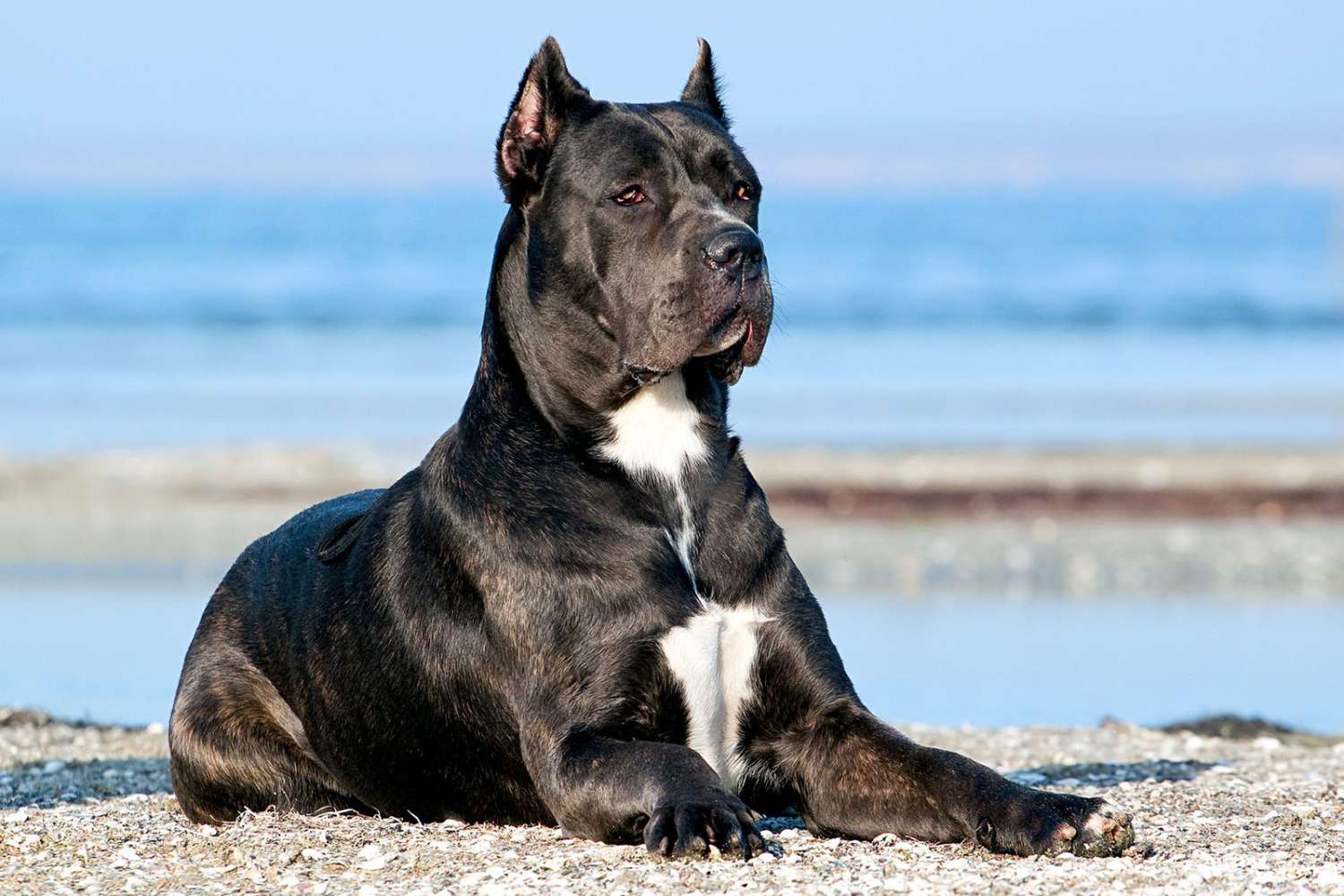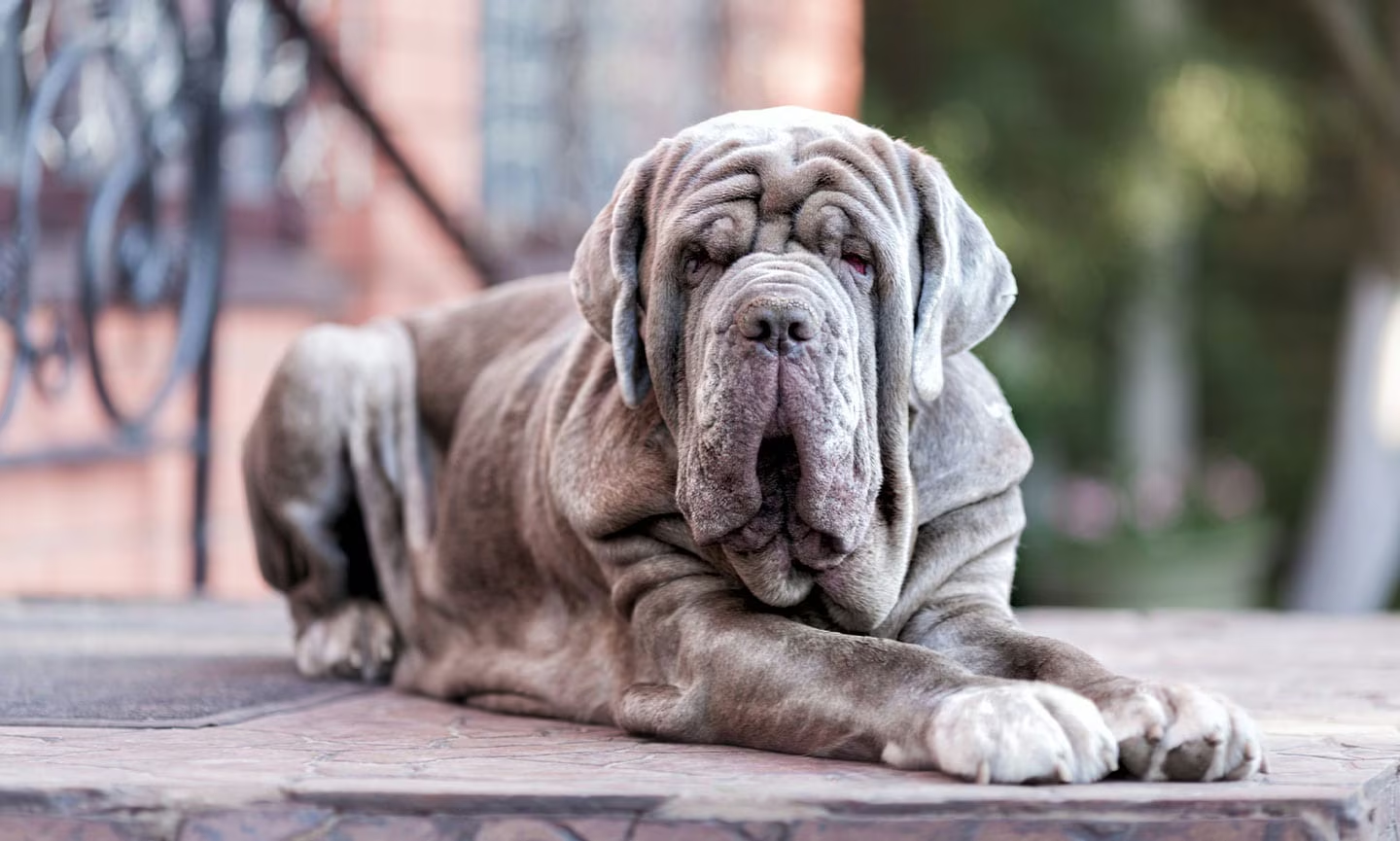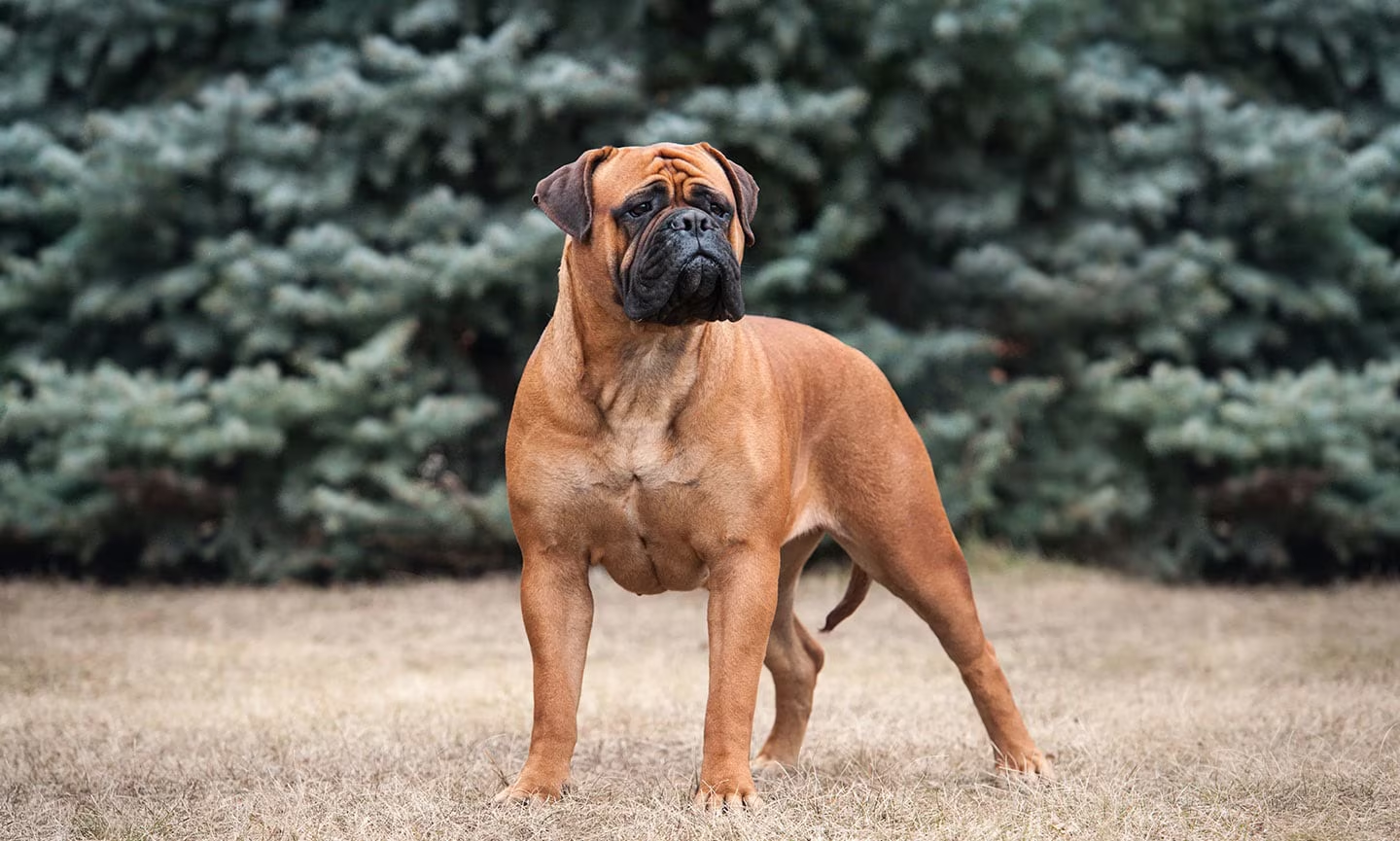Meeting the Majestic Mastiff
The first time I encountered a Mastiff up close, I literally gasped. There’s something absolutely awe-inspiring about standing next to a dog that weighs as much as an adult human. With their massive heads, powerful bodies, and surprisingly gentle eyes, Mastiffs have a presence that commands attention without even trying. These colossal canines aren’t just physically impressive—they’ve got the personality to match their imposing stature.
If you’ve ever wondered about adding one of these gentle giants to your family (or if you’re just Mastiff-curious), you’ve come to the right place. As someone who’s been obsessed with this ancient breed for years, I’m thrilled to break down everything you need to know about these magnificent dogs—from their fascinating history as war dogs and guardians to their surprisingly chill home life as modern companions.
While their size might initially intimidate you (we’re talking about dogs that can tip the scales at 230 pounds!), Mastiffs are actually known for their gentle temperament and deep loyalty. They’re living proof that you shouldn’t judge a book by its cover—or a dog by its massive paws. So grab your favorite beverage, get comfortable, and let’s dive into the wonderful world of Mastiffs!
The Fascinating History: From Ancient War Dogs to Modern Companions
The Mastiff’s history reads like an epic adventure spanning thousands of years. When we talk about “ancient” dog breeds, Mastiffs truly earn that title—their ancestors have been walking alongside humans since the earliest days of civilization.
Ancient Origins and Noble Heritage
Archaeological evidence shows Mastiff-type dogs appearing in art and records from ancient civilizations dating back over 3,000 years. Depictions of these powerful dogs have been found in Egyptian, Babylonian, and Greek artifacts, with some evidence suggesting their lineage might trace back even further to the mountains of Tibet or northern India.
These ancient Molossian dogs, as they were known, were solidly built with heavy bones, short muzzles, and powerful necks—characteristics still defining today’s Mastiffs. They were primarily used as guardians and war dogs, their imposing size and courage making them valuable assets in battle.
The British Mastiff Takes Shape
While Mastiff-type dogs existed worldwide, the English Mastiff we know today was specifically developed in Britain. Their presence there predates even the Roman invasion—when Caesar arrived in 55 BCE, he was so impressed by these massive British dogs that he exported some back to Rome to fight in the Colosseum against lions, bears, and other formidable opponents.
Throughout medieval times, Mastiffs served as estate guardians, protecting castles and noble homes across Europe. Their courage and loyalty made them invaluable protectors, while their intimidating size alone was often enough to deter intruders.
Near Extinction and Revival
Like many breeds, Mastiffs faced serious challenges during the World Wars. By 1945, the breed was almost extinct in Britain, with only eight Mastiffs of breeding age remaining in the entire country! The breed was saved largely thanks to imports from Canada and the United States, where breeders had maintained the bloodlines.
Today’s Mastiffs maintain the physical traits of their ancestors, but centuries of careful breeding have emphasized their gentle, friendly temperament over aggression. The modern Mastiff has traded the battlefield for the living room, becoming one of the most beloved family companions among giant breeds.
Physical Characteristics: The Impressive Mastiff Look
When you think “big dog,” the Mastiff should be the poster child. These aren’t just large dogs—they’re MASSIVE. But their appeal goes far beyond their size, with a distinctive appearance that turns heads wherever they go.
Size and Structure: The True Gentle Giant
Let’s talk numbers: male Mastiffs typically stand 30+ inches at the shoulder and can weigh between 160-230 pounds, with females slightly smaller at 27.5+ inches and 120-170 pounds. For perspective, that’s about the size of a small adult human! The Guinness World Record for the heaviest dog ever recorded belongs to an English Mastiff named Zorba, who weighed a jaw-dropping 343 pounds. (Though honestly, that’s WAY too heavy for good health—responsible owners aim to keep their Mastiffs fit, not overweight.)
Despite their enormous size, Mastiffs move with surprising grace. Their bodies are powerful and muscular, with a broad chest, strong legs, and a level back. They’re slightly rectangular in proportion, being somewhat longer than they are tall, which contributes to their solid, substantial appearance.
That Distinctive Mastiff Head
A Mastiff’s head is arguably their most recognizable feature—massive, square, and imposing. Their skull is broad with a short muzzle (though not extremely flat-faced like some brachycephalic breeds), and those adorable wrinkles and folds give them a perpetually concerned expression that’s impossible not to love.
The eyes of a Mastiff are medium-sized, set wide apart, and range from hazel to dark brown. Their expression is alert and intelligent, often with a gentle, soulful quality that belies their imposing size. Their ears are relatively small compared to their head, v-shaped, and folded downward in a “rose” position that adds to their dignified appearance.
Perhaps the most distinctive facial feature is the dark mask around the muzzle and eyes. This black mask is a requirement in the breed standard and provides a striking contrast to their coat color.
Coat and Colors: Simple But Stunning
Mastiffs keep it simple in the coat department with a short, straight outer coat and dense undercoat that provides protection without requiring extensive grooming. Their coat comes in three main colors:
- Fawn (light tan to reddish-gold)
- Apricot (yellowish-red)
- Brindle (fawn or apricot base with dark stripes)
All Mastiffs should have that characteristic black mask I mentioned earlier, regardless of their base coat color. Some may have small white markings on the chest, toes, or chin, but extensive white is considered a fault in show dogs (though it doesn’t affect their ability to be amazing pets!).
The Drool Factor: Let’s Keep It Real
I wouldn’t be doing my job if I didn’t mention the infamous Mastiff drool. Those loose jowls that contribute to their distinctive appearance also mean that Mastiffs are champion droolers. After drinking water, during meals, when they’re excited, when they’re hot—basically, expect some slobber in your life if you bring home a Mastiff.
Many Mastiff owners keep “drool rags” strategically placed around the house and learn to laugh about the occasional drool string on their clothes or furniture. It’s just part of the Mastiff experience! (And honestly, you get used to it faster than you’d think.)
Temperament and Personality: The Heart of a Gentle Giant
While a Mastiff’s size might be what first catches your eye, it’s their personality that truly wins hearts. These dogs possess a unique combination of dignity, loyalty, and gentleness that makes them extraordinary companions for the right homes.
The Essence of Mastiff Temperament
If I had to sum up Mastiff temperament in one phrase, it would be “gentle strength.” These dogs are the definition of gentle giants—docile, good-natured, and typically very calm indoors despite their imposing size. They form deep bonds with their families and are particularly known for their affinity with children. There’s something almost magical about watching a 200-pound dog delicately interact with a small child, showing incredible awareness of their own size and strength.
Mastiffs are dignified dogs who carry themselves with a quiet confidence. They’re not hyperactive or constantly seeking attention, but they do want to be with their people, often following family members from room to room or finding a spot to lie down where they can keep an eye on everyone.
Protective Instincts: The Guardian Heart
While modern Mastiffs are far removed from their war dog ancestors, they retain strong protective instincts. They’re naturally wary of strangers and will position themselves between their family and any perceived threat. This protective nature usually manifests as alert watchfulness rather than aggression—a Mastiff typically assesses situations carefully before deciding if intervention is needed.
When properly socialized, Mastiffs can distinguish between normal situations and genuine threats. They’re not prone to nervous or reactive behavior, instead maintaining a calm vigilance that can be incredibly reassuring. Their intimidating size alone is usually enough deterrent for anyone with bad intentions!
Home Life: Surprisingly Low-Key Couch Potatoes
Despite their history as working dogs, modern Mastiffs are surprisingly chill at home. In fact, they’ve earned a reputation as “enormous couch potatoes” for good reason! Adult Mastiffs are generally quiet, low-energy dogs who are perfectly content to lounge around the house, occasionally relocating to be near their favorite humans.
This relaxed nature makes them surprisingly suitable for less active families or even apartment living (although they do need daily walks and adequate space to move around comfortably). They’re not dogs that need hours of intense exercise—moderate daily activity is plenty for most adult Mastiffs.
Don’t be fooled by their massive size—these gentle giants often think they’re lapdogs! Many Mastiff owners report their dogs trying to crawl into their laps or at least resting their enormous heads there. And yes, most are notorious bed-hogs if allowed to sleep with their humans!
With Children and Other Pets
Well-bred Mastiffs with proper socialization typically excel with children. They seem to have an innate gentleness around kids and often become particularly protective of the youngest family members. That said, their size alone requires supervision with small children—even a friendly tail wag from a Mastiff can accidentally knock over a toddler!
When it comes to other pets, Mastiffs generally get along well with other dogs and even cats, especially if raised with them. They’re not typically dog-aggressive and can live harmoniously in multi-pet households. Some may have prey drive toward very small animals like rabbits or hamsters, but many Mastiffs are remarkably gentle even with tiny creatures.
Training and Socialization: Setting Your Mastiff Up for Success
Training a Mastiff requires understanding their unique temperament and working with their natural instincts rather than against them. These intelligent but sometimes stubborn dogs respond best to consistent, positive methods and early socialization.
Start Early: The Critical Socialization Period
Socialization is absolutely crucial for Mastiff puppies. Given their natural protective tendencies and wariness of strangers, exposing them to a wide variety of people, places, animals, and situations during their formative months (8-16 weeks) helps them develop into confident, well-adjusted adults.
Focus especially on positive experiences with different types of people, including men, children, people wearing hats or uniforms, and people using mobility aids or equipment. This helps prevent fear-based reactions later in life. Puppy kindergarten classes can be fantastic for controlled socialization with other dogs and diverse humans.
Remember that socialization doesn’t end after puppyhood—continue exposing your Mastiff to new experiences throughout adolescence and into adulthood to maintain their social skills.
Training Approach: Respect Their Dignity
Mastiffs respond poorly to harsh training methods or heavy-handed corrections. These sensitive dogs thrive with positive reinforcement techniques that reward desired behaviors rather than punishing mistakes. Treats, praise, and play can all be effective motivators, though many Mastiffs work primarily for your approval rather than food rewards.
Consistency is key with this breed. Establish clear rules and boundaries from the beginning, and enforce them fairly but firmly. Mastiffs appreciate knowing exactly what’s expected of them, and they respond well to structured routines.
While intelligent, Mastiffs can also be independent thinkers who sometimes question why they should perform certain tasks. Training sessions should be kept short (5-10 minutes), positive, and engaging to prevent boredom or stubbornness from setting in.
Essential Skills for the Well-Mannered Mastiff
Given their enormous size and strength, certain training priorities take precedence with Mastiffs:
- Leash manners are absolutely essential—a 200-pound dog pulling on leash is not just annoying, it’s potentially dangerous
- Reliable recall (coming when called) can be lifesaving in emergency situations
- Polite greetings with both humans and other dogs prevent intimidating encounters
- “Leave it” and “drop it” commands help manage any inappropriate chewing or item possession
- Appropriate door manners prevent bolting out entrances
Basic obedience (sit, stay, down) provides the foundation for these more specialized skills and helps establish you as a leader worth listening to.
The Adolescent Challenge
Mastiff owners should prepare for the adolescent phase, typically between 6-18 months, when their formerly compliant puppy may suddenly develop selective hearing and test boundaries. This is normal developmental behavior but can be particularly challenging with a dog rapidly approaching adult size and strength.
During this phase, maintain consistent training expectations while understanding that regression is normal. Patience and humor will get you through! Most Mastiffs mature into well-mannered adults by 2-3 years of age, though some retain puppy-like playfulness throughout their lives.
Health and Care: Keeping Your Mastiff Thriving
Providing proper care for a Mastiff requires understanding their specific health needs and taking a proactive approach to preventative care. While generally robust dogs, their giant size does present some unique health considerations.
Lifespan and Common Health Concerns
Like most giant breeds, Mastiffs have relatively shorter lifespans than smaller dogs, typically 6-10 years. This makes maximizing their health and quality of life particularly important.
Some health issues more common in the breed include:
- Hip and elbow dysplasia (joint malformation that can lead to arthritis)
- Bloat/gastric torsion (a life-threatening emergency where the stomach twists)
- Heart conditions, particularly cardiomyopathy
- Hypothyroidism (underactive thyroid)
- Progressive Retinal Atrophy (gradual vision loss)
- Cystinuria (a urinary stone disease more common in males)
Working with a reputable breeder who conducts appropriate health testing helps reduce the risk of inherited conditions. For owners of rescue Mastiffs with unknown backgrounds, establishing a good relationship with an experienced veterinarian familiar with giant breeds is especially important.
Nutrition: Feeding the Gentle Giant
Proper nutrition is crucial for Mastiffs at all life stages, but especially during puppyhood. Mastiff puppies need to grow slowly to reduce the risk of orthopedic problems, so a high-quality large-breed puppy food with appropriate calcium levels is essential.
Adult Mastiffs typically eat less than you might expect for their size—quality matters more than quantity. Many do well on premium large-breed adult formulas that support joint health. Divide daily portions into at least two meals to reduce the risk of bloat.
Weight management is crucial for this breed. Excess weight puts tremendous strain on joints and internal organs, potentially shortening lifespan and reducing quality of life. You should be able to feel (but not prominently see) your Mastiff’s ribs, and they should have a visible waist when viewed from above.
Exercise Needs: Moderate But Necessary
Despite their size, Mastiffs don’t need excessive exercise—in fact, too much can be harmful, especially for growing puppies. For adult Mastiffs, 30-45 minutes of moderate activity daily is typically sufficient, with a focus on controlled, low-impact exercise like walking rather than high-impact activities like running or jumping.
Exercise needs do vary by age:
- Puppies (under 18 months): Short, multiple walks daily with plenty of rest periods; avoid stairs, jumping, and slippery floors
- Adults (2-5 years): Regular daily walks and moderate play sessions; some enjoy swimming as a joint-friendly exercise
- Seniors (6+ years): Continued daily activity adjusted for comfort level; shorter, more frequent walks may be better than one long session
Remember that Mastiffs are sensitive to heat due to their size and relatively short muzzles. Exercise during cooler parts of the day and always provide access to fresh water and shade.
Grooming: Easier Than You’d Think
The Mastiff’s short coat is surprisingly low-maintenance. Weekly brushing with a rubber curry brush or grooming mitt helps remove dead hair and distribute skin oils. They do shed, with seasonal increases typically in spring and fall, but it’s manageable with regular brushing.
Bathing needs are minimal—usually every 2-3 months unless they get particularly dirty. More frequent bathing can strip natural oils and lead to skin issues. Use a gentle dog shampoo formulated for sensitive skin.
Don’t forget these other grooming essentials:
- Cleaning facial wrinkles regularly to prevent infection (baby wipes work well, followed by thorough drying)
- Checking and cleaning ears weekly
- Trimming nails every 3-4 weeks
- Brushing teeth regularly for dental health
And yes, “drool management” falls under grooming too! Keep soft cloths handy for wiping jowls after drinking or during excited moments. Some owners dress their Mastiffs in bandanas that can catch drool before it hits the floor.
Living With a Mastiff: Practical Considerations
Before bringing home a Mastiff, there are some practical aspects of daily life with these gentle giants that deserve careful consideration. From housing needs to financial planning, understanding what it really means to share your home with a dog of this size helps ensure a successful match.
Space Requirements: Room to Maneuver
While Mastiffs don’t need acres of running space, they do need room to move comfortably within your home. Their sheer size means they take up significant floor space, whether lounging in the living room or navigating hallways. Tight spaces and steep stairs can be challenging for these large dogs to manage, especially as they age.
Outdoor space is beneficial but not mandatory. A fenced yard provides a safe area for bathroom breaks and moderate play, but many urban Mastiffs thrive with regular walks and no private yard. If you do have a fence, make sure it’s sturdy and at least 6 feet tall—while not typically jumpers or escape artists, a determined Mastiff can clear or break through inadequate fencing.
Vehicle considerations are important too—transporting a full-grown Mastiff requires a larger vehicle with accessibility features for a dog who may weigh more than most humans!
Family Compatibility: Is a Mastiff Right for You?
Mastiffs can thrive in various household setups, but they’re not the right fit for everyone. They typically do best with:
- Families who spend significant time at home (they bond closely and don’t do well with long periods alone)
- Households with older children who understand how to respectfully interact with dogs
- People who appreciate a calm, somewhat reserved companion rather than an energetic playmate
- Owners who have some previous dog experience and understand positive training methods
- Those who aren’t overly concerned about drool, shedding, or having personal space (Mastiffs are notorious leaners and personal space invaders!)
They may not be ideal for:
- Very active families seeking a running or hiking companion
- Households with very young, unsteady toddlers (due solely to the risk of accidental bumping)
- Those living in housing with weight or breed restrictions
- People who are physically unable to manage a large dog in an emergency situation
The Financial Reality: Budgeting for a Giant
Let’s be real—big dogs come with bigger expenses. Prospective Mastiff owners should prepare for costs that often exceed those of average-sized breeds:
- Food: Obviously, they eat more than smaller dogs, with quality adult food costing $80-150+ monthly
- Preventative medications: Flea/tick and heartworm medications are typically dosed by weight, meaning giant breeds need larger, more expensive doses
- Veterinary care: Procedures often cost more due to increased anesthesia requirements and medication dosages
- Supplies: Larger beds, crates, collars, and other accessories all come with premium pricing
- Emergency care: If something goes wrong, treatment for a 200-pound dog costs significantly more than for a 20-pound dog
Many Mastiff owners find pet insurance a worthwhile investment, helping manage unexpected medical costs that can quickly become overwhelming given the breed’s size.
Finding Your Mastiff: Adoption and Purchasing Options
If you’ve decided a Mastiff is the right breed for you, the next step is finding your gentle giant. Whether you choose to adopt or purchase from a breeder, doing your research is crucial to finding a healthy, well-socialized dog.
Rescue and Adoption
Contrary to what some might expect, purebred Mastiffs do end up in rescue situations. Breed-specific rescues like Mastiff Rescue organizations exist throughout the country, focusing exclusively on finding homes for Mastiffs and Mastiff mixes. General rescue organizations and shelters sometimes have them as well, though they may be labeled simply as “large mixed breed” dogs.
Adoption advantages include:
- Lower initial cost (typically $300-600 adoption fee)
- Often already spayed/neutered with initial vaccinations
- Many are already house-trained adults, bypassing the challenging puppy stage
- The satisfaction of providing a loving home to a dog in need
When adopting, be prepared to discuss your living situation, experience with dogs, and how you plan to care for a giant breed. Good rescues want to ensure their dogs go to appropriate, permanent homes.
Responsible Breeders
If you decide to purchase a Mastiff puppy, finding a responsible breeder is absolutely essential. Ethical Mastiff breeders are focused on health, temperament, and breed preservation rather than profit.
Signs of a responsible breeder include:
- Health testing of breeding stock for conditions common in Mastiffs (hip/elbow evaluations, cardiac screening, etc.)
- Raising puppies in a home environment with early socialization
- Limited breeding frequency for female dogs
- Knowledgeable about the breed and willing to educate new owners
- Careful screening of potential buyers and willingness to take dogs back if needed
- Ongoing support and guidance throughout the dog’s life
Expect to pay $1,500-3,000 for a well-bred Mastiff puppy from health-tested parents. While this may seem expensive, it’s an investment in a healthier dog and potentially fewer medical issues down the road.
Red Flags to Avoid
Whether adopting or purchasing, watch for these warning signs:
- Anyone breeding “rare” colors not standard for Mastiffs (like blue or merle)
- Claims of “extra-large” or “giant” Mastiffs far exceeding breed standards
- Multiple litters available at once or always having puppies available
- Unwillingness to show you the puppies’ living conditions or meet the mother
- No health testing or guarantees
- Pressure to decide quickly without asking questions
Taking your time and being selective is important when acquiring any dog, but particularly crucial with a breed as large and powerful as the Mastiff.
Conclusion: Is a Mastiff Your Perfect Match?
After spending time with these magnificent dogs and their devoted owners, I’ve come to believe that Mastiffs are one of the most misunderstood breeds. Behind that imposing exterior lies a gentle soul with limitless loyalty and surprising sensitivity.
These aren’t dogs for everyone—they drool, they shed, they take up half your couch, and yes, they might occasionally step on your foot with the force of a small elephant. But for those who appreciate their unique combination of strength and gentleness, protective instincts and peaceful nature, Mastiffs offer incomparable companionship.
If you have the space in your home and heart for one of these gentle giants, if you value loyalty and quiet dignity over endless energy and athleticism, and if you’re prepared for the financial and practical realities of giant breed ownership, a Mastiff might just be your perfect match.
Just be warned—once you go Mastiff, it’s hard to imagine life with any other breed. There’s something truly special about sharing your days with a dog whose heart is as big as their impressive physical presence. As Mastiff lovers often say, they’re not just big dogs—they’re giant bundles of love with paws the size of dinner plates and hearts even bigger.
